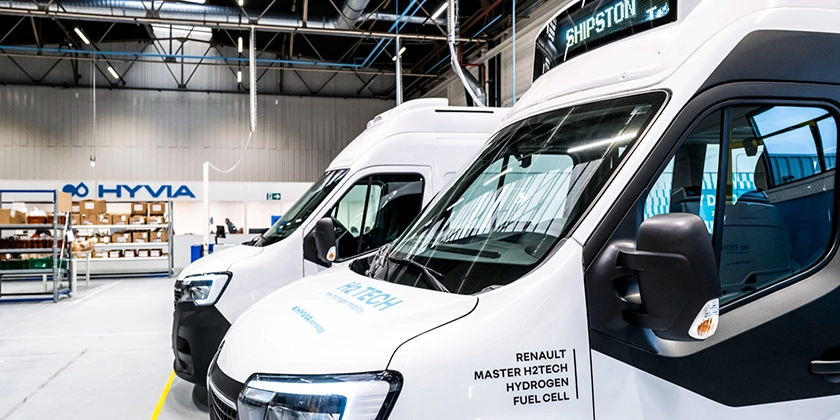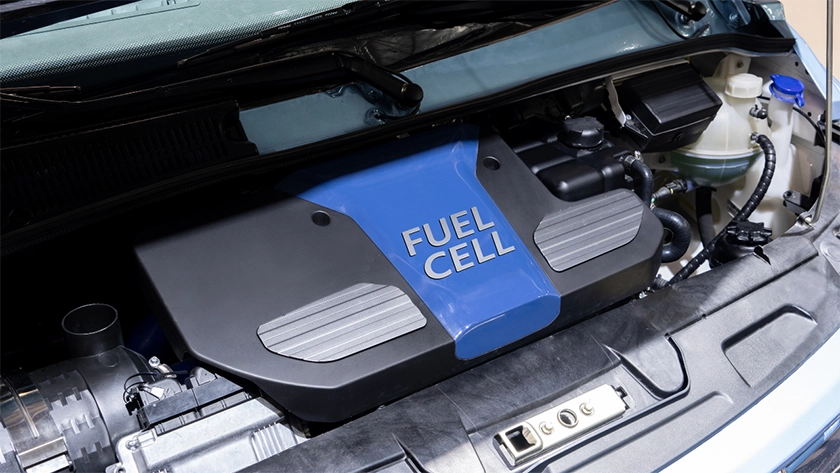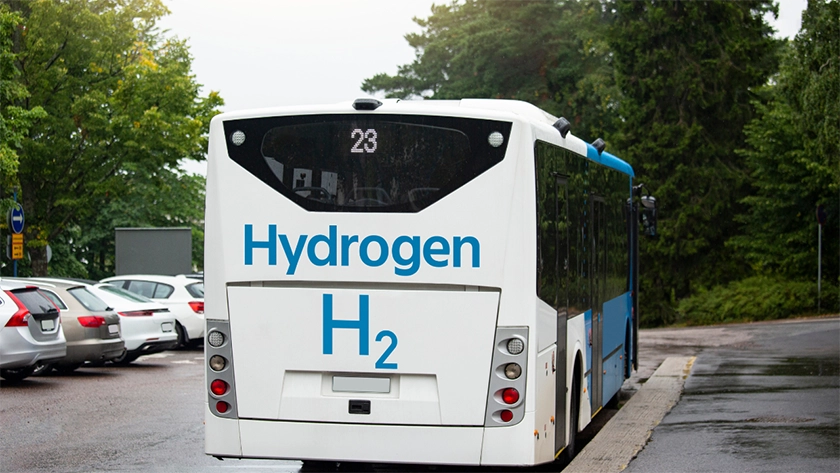Fuel Cells in Transportation: Driving the Future of Sustainable Mobility
Fuel cells are emerging as a vital technology in the quest for sustainable transportation. As the world increasingly seeks cleaner energy solutions, fuel cell electric vehicles offer a promising alternative to traditional combustion engines, providing efficient and eco-friendly power for various types of vehicles.
Fuel cells generate electricity through a chemical reaction between hydrogen and oxygen, emitting only water vapor and heat as byproducts. This makes them an excellent choice for reducing the environmental impact of transportation. In modern transportation, fuel cells are being integrated into a wide range of electric vehicles, from commercial buses and trucks to passenger cars and even marine vessels.
In this blog, we’ll explore how fuel cells are revolutionizing transportation, examining their advantages, applications, challenges, and prospects. Whether it’s reducing emissions or enhancing performance, fuel cells are paving the way for a greener, more sustainable future on the road.
What Are Fuel Cells?
Fuel cells are devices that convert the chemical energy of hydrogen directly into electrical energy through an electrochemical reaction. Unlike traditional batteries, fuel cells continuously generate electricity if fuel and an oxidant are supplied.
The most common type of fuel cell used in transportation is the Proton Exchange Membrane (PEM) fuel cell. PEM fuel cells use hydrogen as the fuel and oxygen from the air as the oxidant and operate at a relatively low temperature. The basic operation involves hydrogen molecules entering the fuel cell at the anode, where they are split into protons and electrons. The protons pass through the membrane to the cathode, while the electrons flow through an external circuit, generating electricity. At the cathode, the protons, electrons, and oxygen combine to produce water and heat.
Fuel cells offer several advantages over conventional combustion engines, including higher efficiency and lower emissions. They are also more reliable and have fewer moving parts, which can reduce maintenance costs over time.
Advantages of Fuel Cells in Transportation
Fuel cells bring numerous benefits to the transportation sector, making them an attractive alternative to traditional internal combustion engines. Here are some key advantages:
Environmental Benefits
One of the most significant advantages of fuel cells is their potential to drastically reduce emissions. Because fuel cells generate electricity through a chemical reaction between hydrogen and oxygen, producing only water vapor and heat as byproducts, the process eliminates the harmful pollutants associated with burning fossil fuels, such as carbon dioxide (CO2), nitrogen oxides (NOx), and particulate matter. By reducing these emissions, fuel cells contribute to cleaner air and help combat climate change.
Efficiency and Performance Improvements
Fuel cells are highly efficient at converting chemical energy into electrical energy. They can achieve efficiencies of up to 60%, significantly higher than the average internal combustion engine, which typically operates at around 20-30% efficiency. This increased efficiency translates into better fuel economy and longer driving ranges than most battery electric vehicles. Additionally, as an electric vehicle, fuel cells provide instant torque and smooth acceleration, enhancing the overall performance and driving experience.
Reduced Dependency on Fossil Fuels
Hydrogen, the primary fuel for most fuel cells, can be produced from a variety of sources. This flexibility reduces dependency on fossil fuels and enhances energy security. As renewable energy sources like wind and solar become more prevalent, hydrogen production can become increasingly sustainable, further supporting the transition to a low-carbon economy.
Applications of Fuel Cells in Transportation
Fuel cells are being integrated into various types of vehicles, offering sustainable solutions across multiple transportation sectors. Here are some key applications:
Fuel Cells in Commercial Vehicles (Buses, Trucks, Vans)

Commercial vehicles, such as buses, trucks, and vans, are ideal candidates for fuel cell technology. These vehicles often operate on fixed routes and return to a central depot, making it easier to manage hydrogen refueling infrastructure. Fuel cells provide the necessary range and power to handle the demands of commercial transportation, while significantly reducing emissions. A notable example is Hyvia, a joint venture between Plug and Renault, which focuses on developing hydrogen-powered commercial vehicles, aiming to create a cleaner and more efficient fleet.
Fuel Cells in Public Transportation (Trains, Trams)
Public transportation systems are increasingly adopting fuel cells to power trains and trams. Hydrogen fuel cells offer a sustainable alternative to diesel engines, providing clean and quiet operation. This transition will improve the air quality in urban areas. A notable project is the deployment of the first hydrogen fuel cell-powered train in Germany, which has set a precedent for other countries to follow suit.
Fuel Cells in Passenger Vehicles (Cars, SUVs)

While fuel cells make the most sense in fleet vehicles that come back to a common facility to refuel, there are still significant advancements being made in passenger vehicles. Automakers like Toyota and Hyundai have introduced hydrogen fuel cell cars such as the Mirai and Nexo. These vehicles offer long driving ranges, quick refueling times, and zero emissions, presenting a viable alternative to battery electric vehicles in certain scenarios.
Emerging Applications (Drones, Marine Vessels)
Fuel cells are also being explored for use in emerging applications such as drones and marine vessels. In the marine sector, projects like the sHYPs group, which Plug is involved with, are working to decarbonize shipping by developing hydrogen fuel cell solutions for boats and ships, promising significant environmental benefits for the maritime industry. Hydrogen-powered drones benefit from longer flight times and quicker refueling compared to battery-powered counterparts, making them ideal for commercial and industrial applications.
Case Studies

Fuel cells are making significant strides in various transportation sectors. Here are some success stories and notable projects driving fuel cell adoption:
Leading Companies and Projects Driving Fuel Cell Adoption
Several companies are at the forefront of fuel cell technology, playing crucial roles in advancing hydrogen as a mainstream energy source for transportation. Plug is a significant player, focusing on commercial applications. Their joint venture, Hyvia, is developing hydrogen-powered commercial vehicles, and they are involved in projects like sHYPs to decarbonize shipping. Additionally, in 2024, Plug Power introduced a Class 6 middle mile fuel cell electric truck.
Ballard Power Systems is a global leader in PEM fuel cell technology, with applications ranging from buses and trucks to trains and marine vessels. Their partnerships and projects worldwide are accelerating the adoption of hydrogen fuel cells in transportation.
Nikola Corporation is another notable company, dedicated to creating hydrogen-powered trucks and fueling infrastructure. Nikola has trucks in the field and recently announced more sales to Walmart Canada and other companies in California. Their innovative approach aims to revolutionize long-haul transportation with zero-emission solutions (Nikola).
Toyota has hydrogen-powered trucks operating at the Port of Long Beach, demonstrating their commitment to sustainable heavy-duty transportation. Hyzon Motors is focusing on hydrogen-powered garbage trucks, adding to the diversity of fuel cell vehicle applications (Hyzon).
Hyundai has also made significant advancements with their Xcient Fuel Cell heavy-duty trucks, which are now operational on German roads. These trucks highlight Hyundai’s commitment to expanding the use of hydrogen in heavy-duty applications across Europe (Hyundai).
In the public transportation sector, Alstom has introduced hydrogen fuel cell-powered trains in Germany, marking a significant milestone. These trains offer a sustainable and efficient alternative to diesel-powered trains, reducing emissions and operating costs (Alstom, Ballard).
Success Stories of Fuel Cell Integration
Toyota’s Mirai is one of the most well-known hydrogen fuel cell cars. Since its launch, the Mirai has demonstrated the viability of fuel cell technology in passenger vehicles, offering a driving range of over 300 miles and a refueling time of just a few minutes. It has helped raise awareness and acceptance of hydrogen as a clean energy source for transportation.
Hyundai’s Nexo is another leading fuel cell vehicle. With its impressive range and advanced features, the Nexo has been well-received in markets where hydrogen infrastructure is developing. Its success highlights the potential for fuel cell vehicles to complement battery electric vehicles in achieving zero-emission transportation.
China has been a leader in deploying fuel cell buses in urban areas. Cities like Beijing and Shanghai have integrated hundreds of hydrogen buses into their public transportation fleets. These buses not only reduce emissions, but also serve as a practical solution for managing air quality in densely populated regions (Buses and Trucks).
Challenges and Solutions
While fuel cells offer many benefits, there are still several challenges to their widespread adoption in the transportation sector. Here are some of the key obstacles and ongoing efforts to overcome them.
Current Challenges in Fuel Cell Adoption
One of the main challenges is the infrastructure required for hydrogen production, storage, and refueling. Unlike gasoline stations, hydrogen refueling stations are still relatively scarce, making it difficult for consumers to find convenient refueling options. This lack of infrastructure can hinder the adoption of fuel cell vehicles, particularly in regions where hydrogen stations are not readily available. This is why fleet vehicles make the most sense currently. Hydrogen fill stations can be placed where the vehicles come back in their off hours.
The cost of fuel cell technology is another significant hurdle. Although prices have been decreasing over the years, fuel cells and hydrogen production remain more expensive than traditional internal combustion engines and even some battery electric vehicles. Reducing these costs is crucial for making fuel cell vehicles more competitive in the market.
Public perception and awareness also pose challenges. Many people are still unfamiliar with hydrogen fuel cell technology and its benefits. Educating consumers and stakeholders about the advantages of fuel cells, such as their environmental impact and efficiency, is essential for driving adoption.
Ongoing Research and Development Efforts
To address these challenges, significant research and development efforts are underway – and have been for years. Companies and governments are investing in the development of more efficient and cost-effective fuel cell technologies. For instance, advancements in catalyst materials and membrane technology are helping to improve the performance and reduce the cost of fuel cells.
Expanding hydrogen infrastructure is another focus area. Collaborative efforts between governments, industry stakeholders, and research institutions are working to build more hydrogen refueling stations. Initiatives like the Hydrogen Mobility Europe project aim to establish a comprehensive hydrogen infrastructure across Europe, making it easier for consumers to refuel their vehicles.
Policies and Incentives Promoting Fuel Cell Technology
Government policies and incentives play a critical role in promoting the adoption of fuel cell technology. Many countries are implementing supportive policies, such as subsidies for hydrogen production, grants for infrastructure development, and tax incentives for purchasing fuel cell vehicles. These measures help reduce the financial burden on consumers and encourage investment in hydrogen technology.
It’s clear that addressing these challenges requires a multifaceted approach involving technological innovation, infrastructure development, and supportive policies. As these efforts continue, the path toward widespread adoption of fuel cell technology in transportation looks increasingly promising.
Future Prospects
The future of fuel cells in transportation looks promising, with ongoing advancements and increasing adoption paving the way for a cleaner and more sustainable world. The following are some key aspects of what we can expect in the coming years.
Predictions for the Future of Fuel Cells in Transportation
As technology continues to improve, the efficiency and cost-effectiveness of fuel cells are expected to increase significantly. Innovations in materials and manufacturing processes will likely lead to more affordable fuel cell systems, making them accessible to a broader range of consumers and industries. Additionally, the expansion of hydrogen infrastructure, with more refueling stations and production facilities, will make it easier for people to adopt fuel cell vehicles.
Potential Impact on Global Transportation and Environmental Goals
Fuel cells can revolutionize global transportation by providing a sustainable alternative to fossil fuels. As more countries commit to reducing their carbon emissions, the adoption of fuel cell technology will play a crucial role in achieving these environmental goals. By replacing traditional combustion engines with hydrogen fuel cells, we can significantly reduce greenhouse gas emissions, improve air quality, and decrease our dependence on oil.
In the commercial transportation sector, fuel cells can offer reliable and efficient power for trucks, buses, and trains, helping to decarbonize freight and public transportation systems. The maritime and aviation industries are also exploring hydrogen fuel cells to reduce their environmental impact, further broadening the scope of this technology’s application.
Vision for a Fuel Cell-Powered Transportation Ecosystem
The vision for a fuel cell-powered transportation ecosystem involves an integrated approach where hydrogen production, distribution, and consumption are seamlessly connected. This ecosystem would include green hydrogen production using renewable energy sources like wind and solar power, extensive hydrogen refueling infrastructure, and widespread use of fuel cell vehicles across various transportation modes.
Collaborative efforts between governments, private companies, and research institutions will be essential to realize this vision. Policies and incentives that support hydrogen infrastructure development and innovation will accelerate the transition to a hydrogen economy. Public awareness and education campaigns will also play a critical role in promoting the benefits of fuel cell technology and encouraging adoption.
The journey toward a fuel cell-powered transportation ecosystem is already underway, and with continued investment and innovation, the future holds immense potential for this transformative technology.
Conclusion
Fuel cells represent a groundbreaking advancement in the quest for sustainable transportation. By offering a clean and efficient alternative to traditional combustion engines, fuel cells have the potential to drastically reduce emissions and improve air quality, addressing some of the most pressing environmental challenges we face today.
We’ve explored how fuel cells work, and the various types used in transportation. The advantages of fuel cells, such as their environmental benefits, efficiency, and reduced dependency on fossil fuels, make them a promising solution for a wide range of vehicles, from commercial trucks and buses to passenger cars and marine vessels.
In examining the applications of fuel cells, we see their versatility in different transportation sectors, supported by real-world success stories and pioneering projects. Companies like Plug, Ballard Power Systems, Toyota, and Hyundai are leading the charge, demonstrating the viability and benefits of fuel cell technology.
Despite the challenges related to infrastructure, cost, and public awareness, ongoing research, development, and supportive policies are paving the way for broader adoption. The prospects for fuel cells in transportation are bright, with significant potential to impact global transportation systems and help achieve environmental goals.
As we move toward a hydrogen-powered transportation ecosystem, collaboration between governments, industries, and research institutions will be key. With continued innovation and investment, fuel cells can play a pivotal role in creating a cleaner, more sustainable future for transportation.
References
· https://www.energy.gov/eere/fuelcells/fuel-cells
· https://www.energy.gov/eere/fuelcells/types-fuel-cells
· https://www.energy.gov/eere/fuelcells/benefits-hydrogen-and-fuel-cell-technologies
· https://www.sciencedirect.com/science/article/pii/S0360319918325276
· https://www.iea.org/reports/the-future-of-hydrogen
· https://www.daimler.com/innovation/case/fuel-cells.html
· https://www.toyota.com/mirai/
· https://www.hyundai.com/worldwide/en/eco/nexo/highlights
· https://www.marineinsight.com/technology/fuel-cells-for-marine-vessels/
· https://www.plugpower.com/shyps-project-working-to-decarbonize-shipping/
· https://www.greencarcongress.com/2020/11/20201127-yutong.html
· https://www.alstom.com/solutions/rolling-stock/coradia-ilint-worlds-1st-hydrogen-powered-train
· https://www.energy.gov/eere/fuelcells/hydrogen-and-fuel-cell-technologies-office
· https://www.hydrogen.energy.gov/
· https://www.iea.org/reports/hydrogen
· https://www.ipcc.ch/report/ar6/wg3/
· https://www.mckinsey.com/industries/automotive-and-assembly/our-insights/the-future-of-hydrogen
The post Fuel Cells in Transportation: Driving the Future of Sustainable Mobility first appeared on Plug Power.
The post Fuel Cells in Transportation: Driving the Future of Sustainable Mobility appeared first on Plug Power.